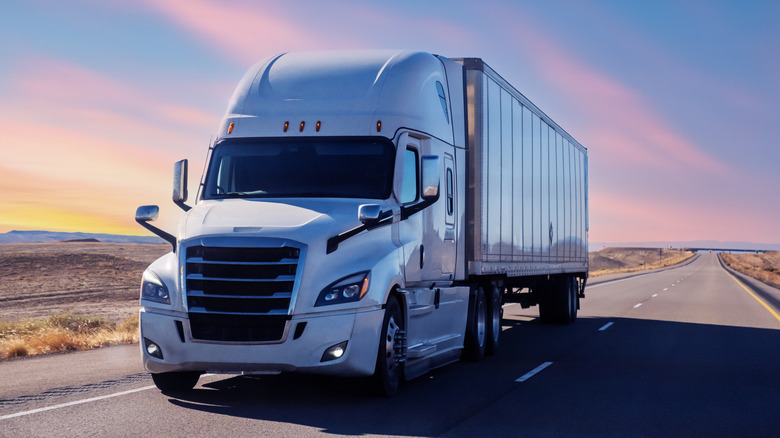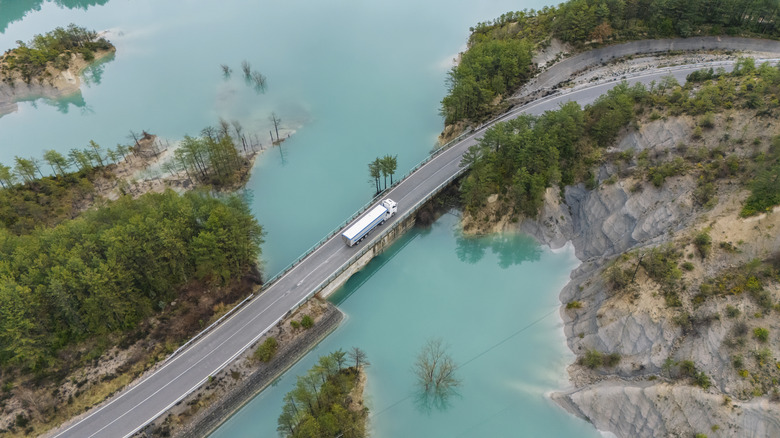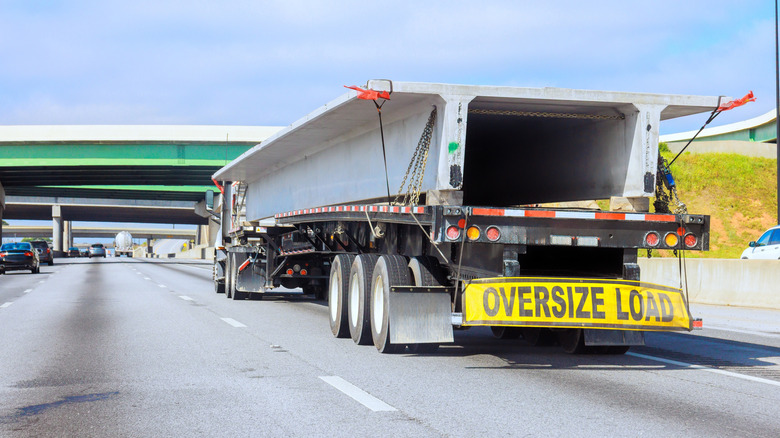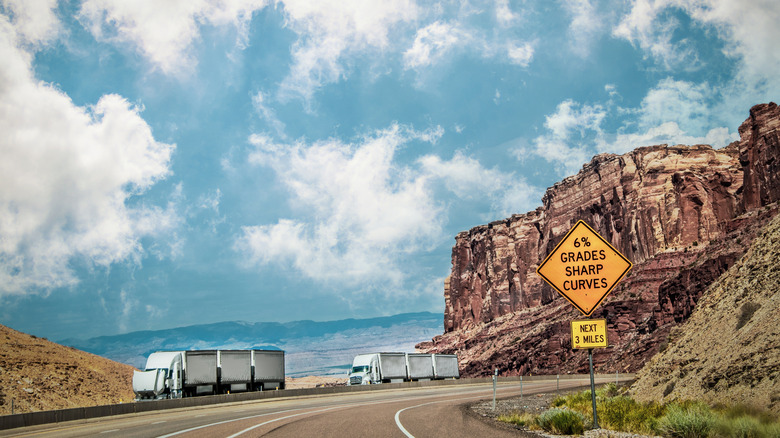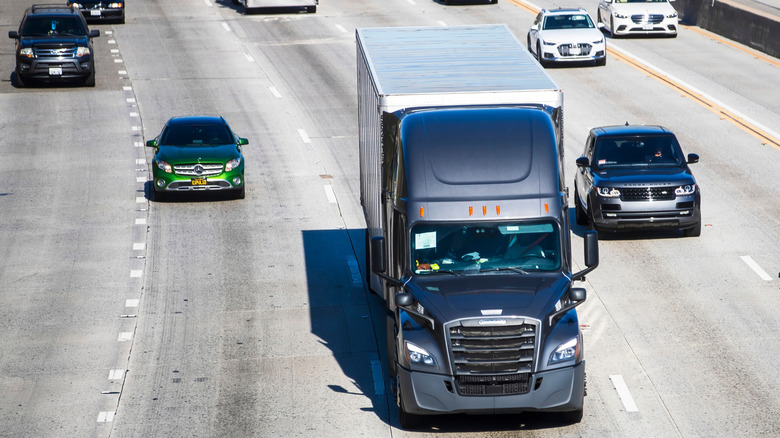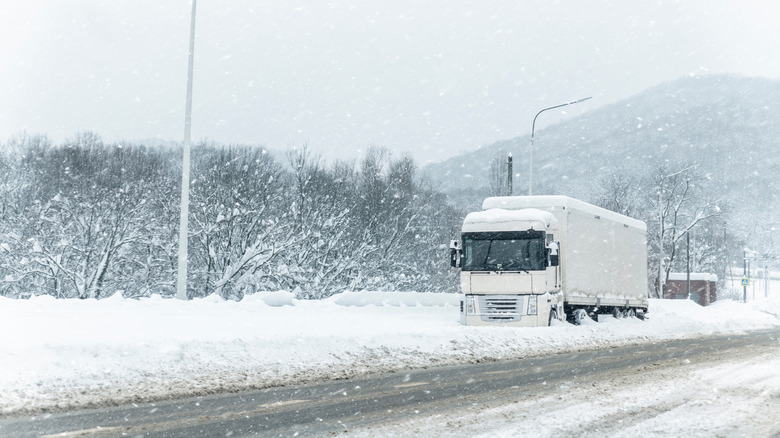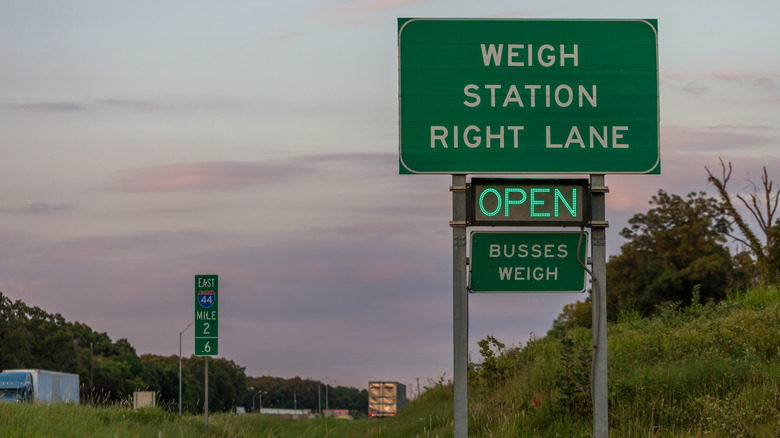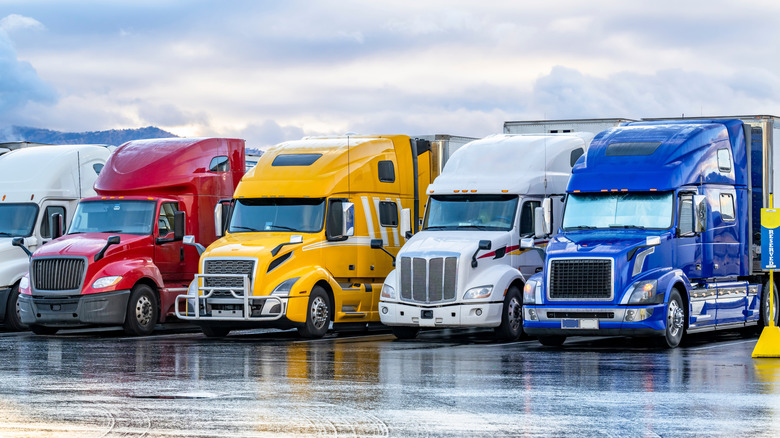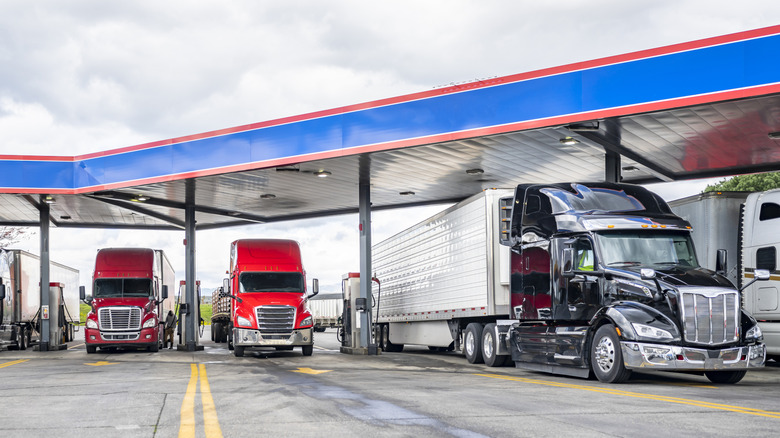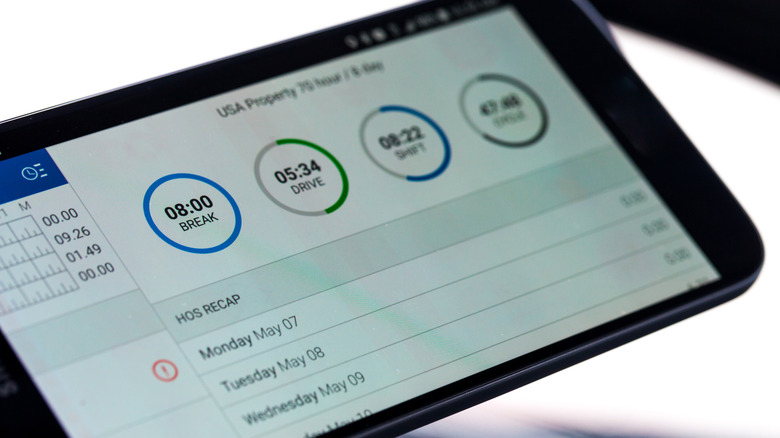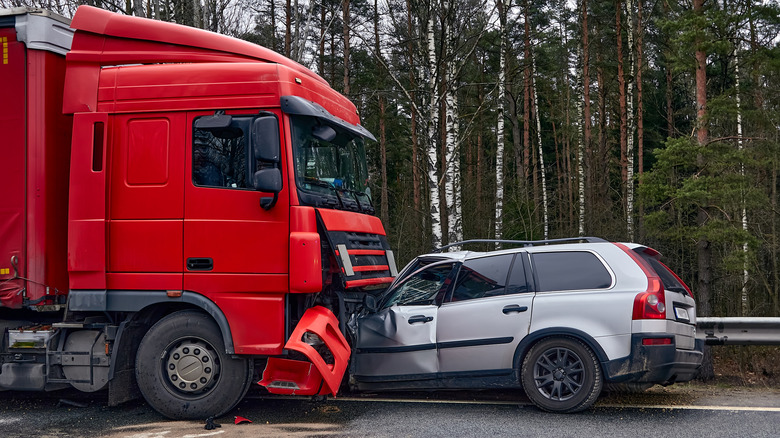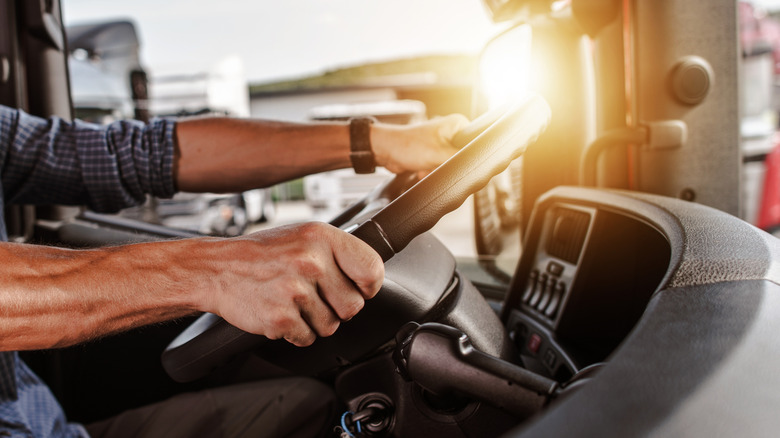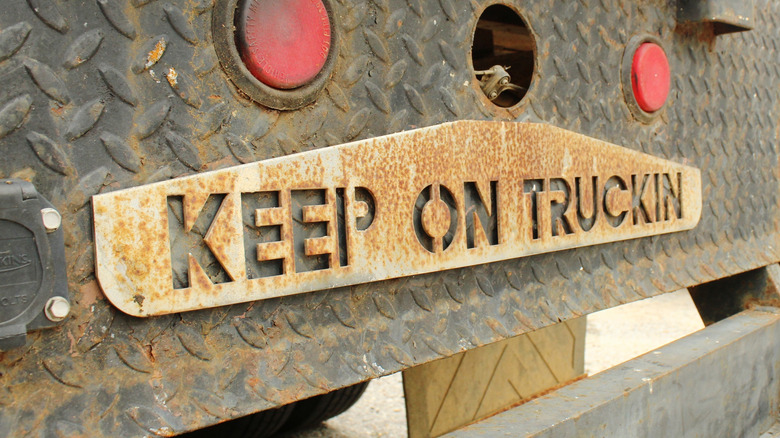How Semi-Truck GPS Systems Differ From Civilian Apps
Spending a few hundred bucks on a dedicated semi-truck GPS might sound like overkill, especially when your phone already tells you where to go for free. But before you shrug it off, picture this: You're cruising along, following your app's chirpy directions, when suddenly you're staring down an 11-foot bridge with your 13-foot 6-inch-tall trailer in tow. There's no quick U-turn or second chances. Just a whole lot of stress, wasted time, and potentially a very awkward call to dispatch.
Regular GPS apps weren't built with truckers in mind. They don't care about axle weight, hazmat load, or that you legally can't take that shortcut through a quiet neighborhood. On the other hand, truck GPS units are like a helpful co-pilot who knows what they're doing. So sure, a truck GPS costs more than free. But one bad detour can cost way more than the device ever will. Still unsure? Let's explore what makes these systems so different.
Truck-specific routing
Most civilian navigation apps, like Google Maps, have one job: Get you to your destination as quickly as possible. That's fine when you're in a car. But when you're behind the wheel of a semi-truck, fastest isn't always legal or even possible. Truck-specific GPS doesn't just pick a route and hope for the best. They cross-reference thousands of trucking regulations, road restrictions, and infrastructure limitations to build a safe, legal route for you and your rig.
Even better, some systems let you customize how you drive. Take the TomTom PRO series navigation units, for example. It goes beyond calculating truck-safe routes to also factor in your personal driving preferences. Prefer left turns over sharp rights? No problem. The navigation software simply replots your route to avoid as many right turns as possible. It's a small touch, but when you're managing heavy loads, details like that make a huge difference.
Height, weight, and load restrictions
Truck-specific routing is already a big step up from your average GPS app. But you can take it even further by customizing your route to match your exact setup. With most truck GPS devices, you don't just tell it where you're headed. You also tell it what you're driving. That includes vehicle height, weight, axle count, trailer length, and even the type of load you're carrying. Why does that matter? Because your route changes drastically depending on what you enter. A road that's fine for a box truck might be completely off-limits for a fully loaded semi with a tall trailer. And if you're hauling hazmat materials, certain roads, tunnels, and bridges may be a no-go (unless you're into unnecessary danger, hefty fines, and a whole lot of hassle).
Systems like the TruckWay Pro Series Model 720 let you input all of your truck's info during setup, then use it to filter out problem routes automatically. Running 80,000 pounds gross weight? It won't even consider bridges with 70,000-pound limits. Specify you're hauling hazardous materials, and certain routes disappear from your options entirely. Your phone's GPS, however, will cheerfully assume you're driving a Honda Civic and treat every road like fair game.
Road grade and terrain warnings
Your phone's GPS looks at a mountain pass and thinks it is a lovely place for a scenic drive. Meanwhile, your semi-truck's screaming up a 7% grade like an asthmatic hippo, brakes already whimpering about the descent to come. Don't worry, you're not alone. Not even the most powerful semi-truck engine can save you from poor planning when gravity starts calling the shots. Fortunately, this is where truck GPS proves its worth. Instead of sending you unknowingly straight into danger, it gives you a heads-up before it's too late to do something about it.
The Garmin dezl OTR620, for example, gives you both audio and visual warnings before you hit the sketchy stuff. That way, you have time to gear down, ease off the throttle, and mentally prepare for what's coming. Sharp curves get the same treatment. Civilian GPS often just sees another bend in the road. However, truck navigation systems sound the alarm for these potential trouble spots where physics and fully loaded 53-foot trailers don't always get along.
Truck speed limits
Here's a fun fact your phone's GPS doesn't know: Not all speed limits apply to you and your semi-truck. When the sign says 70 MPH, that's great for the passenger cars flying by in the left lane. But if you're in a semi, the rules are different. Some states set lower speed limits for semi-trucks, and you're expected to know them. California takes this to the extreme, capping all trucks with three axles or more at 55 MPH on freeways. The worst part? These rules are constantly changing. Texas repealed its truck speed limit caps, while other states tightened theirs. Good luck keeping track of it all manually.
Thankfully, you don't have to if you run a dedicated semi-truck navigation system. Even simple GPS units like the XGODY X4 display the correct speed limits for trucks. This keeps you on the right side of the law without requiring you to memorize every state's current trucking regulations. And with lifetime updates included, your GPS stays current as rules shift, so you don't get caught off guard when rolling into a new state with outdated information.
Weather overlays
Sure, any smartphone can tell you the weather, but a truck GPS puts that information where it matters: right on your route map. Forget knowing whether you'll need a hoodie at your next fuel stop. This is about spotting the storm systems, wind advisories, and icy roads waiting miles ahead. Because when the weather takes a turn, the last thing you want is to find out too late.
Fortunately, GPS units like the Rand McNally TND 540 have your back. With live radar and 10 different map overlays for everything from wind speed to storm intensity, you'll know exactly what kind of mess lies ahead. The real-time tracking lets you make smart decisions about when to reroute, ease up, or find the next safe place to hunker down. The weather might not care about your delivery window, but your GPS should. And with the right one onboard, you can stay one step ahead of whatever Mother Nature's brewing up.
Weigh station alerts
Pop quiz: How many weigh stations will you encounter on your 800-mile haul from Chicago to Atlanta? If you're using your phone's GPS, the answer isn't available because civilian navigation apps pretend that weigh stations don't exist. They'll cluelessly guide you past mandatory stops without so much as a heads-up, leaving you to stop those open signs at the last possible second. Not cool.
Truck GPS takes an entirely different approach. The Rand McNally TND 730, for instance, not only knows where every weigh station is but also tracks whether they're currently open or closed — no more playing roulette with DOT enforcement. You get advanced warning about upcoming stations and their current status so that you can prepare accordingly. And that's a relief, because few things say 'rookie mistake' louder than having to circle back to a missed scale and explain yourself to an annoyed inspector.
Rest stop and parking info
Finding a safe place to park an 80-foot rig for your mandatory rest break shouldn't feel like hunting for buried treasure. But that's exactly what it becomes when relying on civilian GPS apps. Your phone might direct you to a scenic overlook, commuter car lot, or some mysterious area that hasn't seen a bathroom since 1982. It has no clue what it takes to park a semi — or how fast truck parking fills up when hours-of-service clocks start flashing red.
Truck GPS devices do track that information. Get yourself a Garmin dezl OTR720, and suddenly, you're planning, not just guessing anymore. You'll get real-time parking availability at major stops like Pilot Travel Centers, plus shower wait times, restaurant options, and whether the place even has the amenities you want. Nothing will ever again stand between you and your semi truck's sleeper cab when it's late, you're tired, and you've had exactly enough of today.
Even better is that with the Garmin dezl community ratings, you get the inside scoop from drivers who've been there, parked that. They'll tip you off to hidden gems and warn you about sketchy spots. You can even search for community-tagged truck entrances and loading docks so you're not stuck playing hide and seek with the gate after a long haul.
Diesel stop finder
That low fuel light hits differently when you're rolling 80 feet deep and can't just swing into the next random gas station. Civilian GPS apps may show you nearby pumps, but they don't know if there's diesel, room for your trailer, or the canopy is tall enough to clear your cab. Truck GPS units know all that and more. They zero in on truck-friendly fueling stations with dedicated truck lanes and high-flow fuel pumps, so you're not spending 20 minutes filling your tanks.
The Rand McNally TND 1050 takes it up a notch with live diesel prices at upcoming stops. When your semi-truck's diesel engine burns through a gallon for every 6 to 7 miles, those price differences add up fast. Why pay at the next exit when there's a truck stop 20 miles ahead selling diesel for less? Your truck GPS does the math for you and keeps your fuel costs from eating into your profits.
Truck and trailer service directory
Breakdowns don't wait for business hours. When your check engine light pops on in the middle of nowhere, your phone's GPS isn't going to pull up a mechanic who works on Freightliner trucks ... or with bays big enough for your super sleeper cab. You can bet that any basic auto repair shop you stop at will take one look at your big rig and politely suggest you try somewhere else. And honestly? Fair. Their lifts probably scream in terror upon hearing your semi-truck pull into the lot.
But when you've got a truck GPS built for the job, help is never too far off. The Garmin dezl OTR1010 and similar units come packed with directories full of truck-ready service centers, mobile mechanics, and after-hours roadside rescue. Looking for new tires, reefer maintenance, or just someone who'll show up in the middle of the night? Filter by service, location, or even brand. Easy.
Offline navigation
Imagine you're in the middle of nowhere, your phone's map app suddenly freezes, and you're stuck staring at a blurry screen with the spinning rerouting icon of doom. If you're driving your car, it's annoying. But when you're in your semi-truck on a strict deadline in an unfamiliar state, it's a serious problem. Especially when your only backup is a gas station clerk who points and says, "Uh ... I think it's left at the cows."
That's where offline maps come in clutch. If you're often threading through remote backroads with zero signal, it might be worth skipping the big-name GPS units in favor of budget models with preloaded maps. For instance, the HQARAT 9-inch touchscreen navigation system gives you all the latest routes through the U.S., Canada, and Mexico. And it even displays them in either 2D or 3D mode, depending on your preference. Plus, with lifetime updates built in, you'll always know where you're going, even if the cows don't.
Electronic data logging support
Tired of your gadgets acting like they're not even on speaking terms? Some truck GPS companies finally got the memo. Meet the Garmin dezlCam 785 LMT-S — your tech's new team player. This little overachiever can buddy up with Garmin's eLog system to handle your hours-of-service recording without dragging your smartphone into the mix. This way, you don't have to be the IT manager of 17 different gadgets just to keep the DOT happy.
When your GPS and electronic data logging system decide to work together, magic happens. The system remembers you're not a driving robot and factors your remaining hours into route planning. So, you can say goodbye to GPS suggesting a 14-hour marathon trip when you've got 3 hours left on your clock. Your phone can't do that. It still lives in a fantasy world where hours-of-service regulations don't exist and drivers never sleep. However, truck GPS is firmly in the real world, where the DOT runs the show.
Built-in dash cam
When a car and a semi-truck have a disagreement on the road, the truck driver often gets the blame. It's a frustrating "he-said, she-said" game that you're set up to lose. Unless, of course, you have an eyewitness who never blinks and has a picture-perfect memory, like the Garmin dezlCam 785 LMT-S. That's right. It's not just great at helping you stay compliant with the DOT. It also comes with a built-in dashcam that's always recording your drive in crisp HD.
In fact, you don't have to lift a finger or worry about hitting record. If it detects a sudden jolt, the software automatically saves the footage from before, during, and after the incident. And here's another cool trick: The GPS isn't stuck to your dash. You can easily pop it off its mount and into full-on detective mode. Walk around the scene snapping photos, then send the evidence to your smartphone with a click of a button. Simple as that. Just shoot, sync, and share.
Hands-free operation
Public roads are no place for touchscreen shenanigans, especially when piloting 80,000 pounds of steel, rubber, and responsibility. You've got enough to worry about without trying to poke at tiny buttons while your truck bounces around like an angry bull. One second of looking away to change your GPS settings could turn into a very expensive (or even tragic) reminder of why having your full attention on the road matters.
The Garmin dezl 780 and dezlCam 785 get this reality and offer voice controls for easy navigation without the dangerous finger work. Need to find the nearest truck stop? Just say it. Want to avoid tolls? Tell your GPS, and it handles the rest. Both units also connect to your phone via Bluetooth for hands-free calling. So, when dispatch rings with an inevitable route change or your customer wants an ETA update, you can handle business without becoming a road hazard.
Skip the guesswork to keep on truckin'
Your phone's GPS has probably done a decent job most days. But decent isn't always enough when you're driving a vehicle that can't exactly flip a U-turn or squeeze under a low bridge. Civilian navigation apps just weren't built for trucks. They don't know your vehicle height, hazmat load, or delivery deadlines. And they don't care if truck parking is nearby when your clock runs out. Truck-specific GPS systems do care. They're built for life on the road so that you can plan your route with fewer surprises that turn into costly mistakes.
While truck GPS units might cost a few hundred dollars upfront, they'll likely save you that much in fines, reduced stress, and actual sleep in legal parking spots. In the end, it's not about saving money anyway. It's about making money, staying safe, and keeping your career moving forward a mile at a time.
